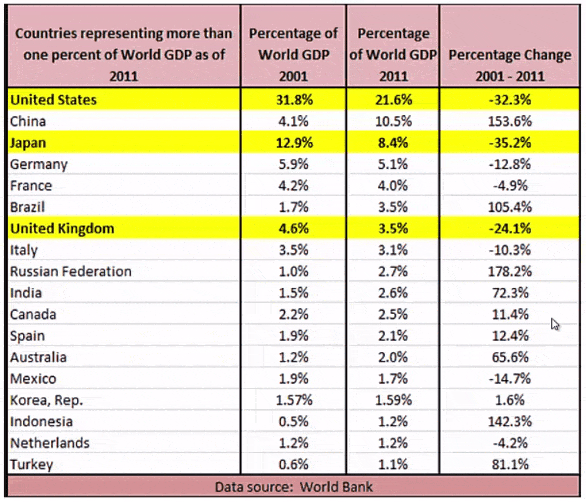One Last Rule The Importance of Diversification
Post on: 25 Июль, 2015 No Comment

If you’ve been following through my Getting Started guide, you’re probably eager to get going. Before I release you into the wild, there’s one last rule you must learn. For this 36th edition of Wisdom Wednesdays, you will learn the importance of diversification.
I’m sure you’ve heard the clique that you can’t put all your eggs in one basket. This wisdom has been passed down since the beginning of civilization. You mustn’t ignore it.
With diversification, you consider and prepare for some of the worst case scenarios. You don’t want a mistake to devastate your portfolio. Even the best investors make mistakes, it’s only human nature. Diversification spreads your risk, and lowers it.
You can’t forget about this last rule. No matter how skilled you are, you need to be protected. The market is completely unpredictable. Every investment is a risk to be lost. The only way to ensure your success is to diversify.
We can’t know exactly what will happen in the future. There’s no way to predict it, the only thing you can be certain of is uncertainty.
But we can look at past history and plan accordingly. While past performance doesn’t guarantee future results, looking at history helps us understand what is more likely to happen.
What does diversification mean for you?
There’s two important facets to diversification. You need to diversify:
1. Asset classes
2. Holdings
Asset classes are things like stocks, bonds, treasuries, real estate, and more. At the very least, diversify your asset classes by holding stocks and bonds. Never have all your investments in one single asset class. Asset classes tend to move together, as stocks rise with other stocks more likely than not.
If you have enough money, I’d recommend adding some real estate [pay with cash only] to your portfolio as well. This isn’t possible for most people; most people should hold stocks and bonds.
I recommend a portfolio with any variation in between the following:
25 % Stocks 75 % Bonds
50 % Stocks 50 % Bonds
75 % Stocks 25 % Bonds
While many financial gurus will recommend weighting the portfolio based on how old you are, I think it’s better to react to the market. What I mean is that, if the market is generally overvalued then allocate more to bonds than stocks. And when stocks become attractive, then allocate more to stocks.
I learned of this strategy from the great Benjamin Graham in his classic The Intelligent Investor. It’s a great way to also buy low and sell high.
When you allocate more to bonds, you are essentially selling your gains on your stocks. If you do this right when the market is overvalued then you will be buying low and selling high.
When you allocate less to bonds, you are buying more stocks. Obviously, you should be doing this when there are more value opportunities in the market.
Do a reallocation just once a year. If you really want to micromanage, then do it every 6 months. But don’t reallocate more than this. It’s important to give your investments some time to ride.
I already know a common obstacle you’ll face. How do I buy bonds?
The truth is, the common investor can’t easily buy single bonds. You need a lot of capital just to own one. If you want to diversify your bonds, then you need even more capital.
Don’t worry I have a solution for you. You can buy low cost index bond funds, which hold a basket of bonds. The best way to do this is with an ETF, which stands for exchanged traded fund. It’s like a mutual fund, but without the excessive fees.
ETFs are traded just like stocks and have individual tickers. Some great bond fund ETFs to start with would be BND or AGG. Buy one of these, and you’ll be diversified on the bond side.

This leads me to part two of the diversification equation. You need to diversify your holdings. If you are weighted with a 75% stock portfolio, you better not have just one or two stocks.
Instead try to have at the least 10 different stocks in your portfolio. This means any one mistake only costs you 10%. If you really want to be prudent, try to make any one stock only 3 4 % of your stock side portfolio.
For the investors who don’t want to actively manage their stocks, I’d recommend a stock fund ETF. Make sure you are getting an index fund, which are cheaper than other managed ETFs. Some popular stock ETFs are SPY, IVV, VOO.
Of course, for those of you who are ambitious you’ll want to take matters into your own hands. There’s nothing wrong with using an index ETF as part of your stock portfolio. It’s a great, easy way to diversify.
One last thing to consider is diversifying the country you invest with. I’d put some of your stock portfolio in some international stocks, and you can do that quite easily with international ETF funds like EEM or ADRE .
It’s up to you with how much you want to invest abroad, but I wouldn’t overdo it. There’s a reason why the United States has been the world’s reserve currency. But it’s always a good idea to get some extra exposure.
Now I know there those of you who want to start actively managing their portfolios. You’re ready to start picking some stocks, and youre ready to start diversifying.
Don’t you wish there was a guide that explicitly breaks down the nitty gritty of stock analysis. The good news is that there is. It’s called the 7 Steps to Understanding the Stock Market. and it comes free when you subscribe .
Now that you’ve hopefully gone through the Getting Started guide and learned all the basics, the next step is 7 Steps to Understanding the Stock Market. Here’s where to subscribe .
Thanks for reading. I hope this post has taught you all you need to know about diversification.
**One Last Rule: The Importance of Diversification**
**All Rights Reserved. Investing for Beginners 2013**
**Link for the photo above found here: Photo Attribution **














